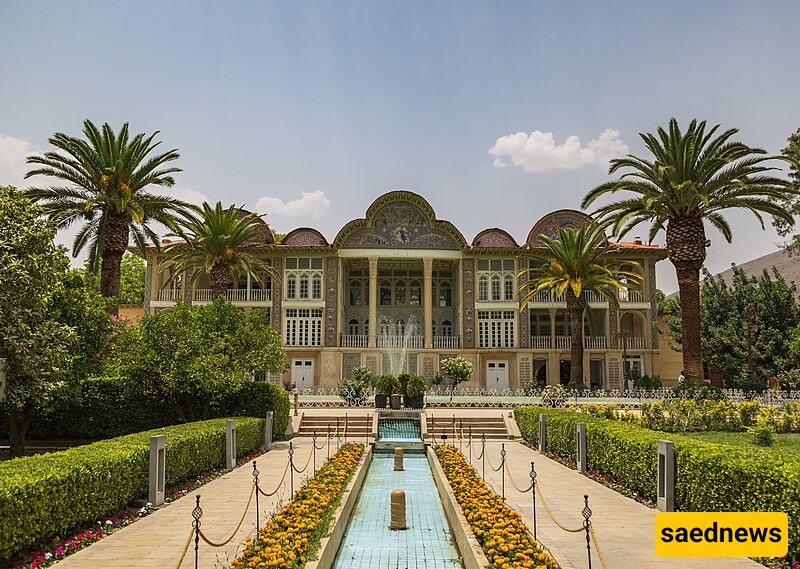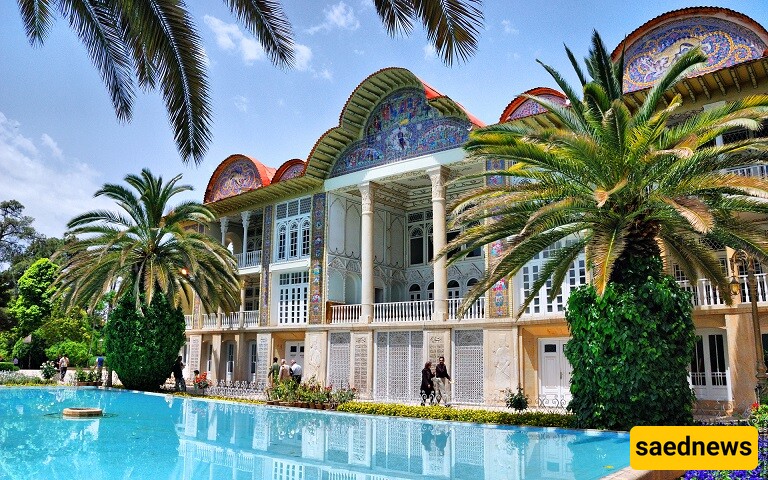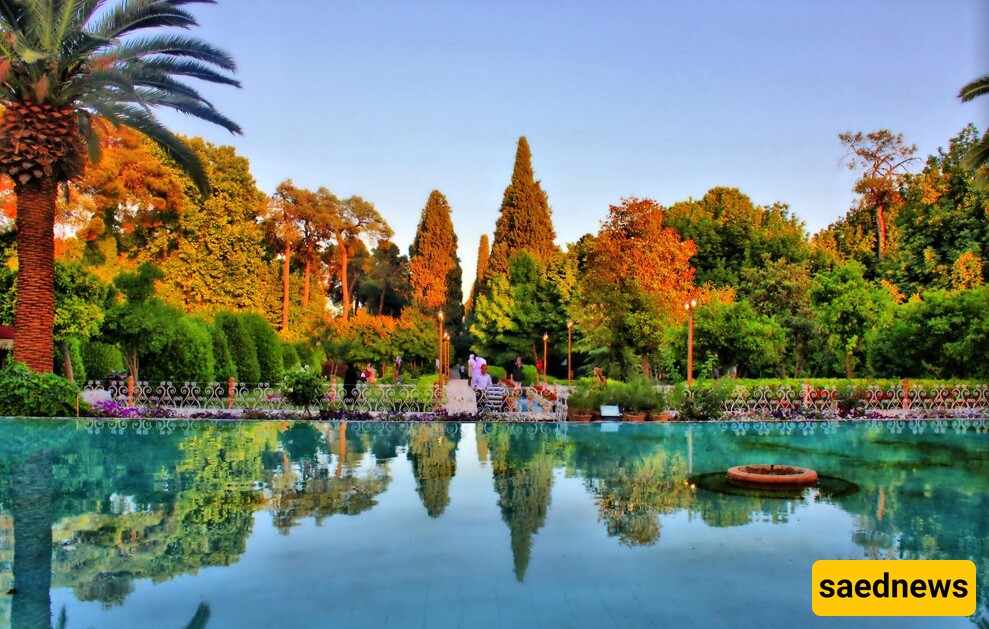SAEDNEWS: Eram Garden, one of Iran’s most famous Persian gardens, showcases an exquisite blend of architecture and botanical diversity. This UNESCO-recognized gem reflects centuries of cultural heritage and is a testament to Persian landscape design.

According to SAEDNEWS, in the vibrant city of Shiraz, Eram Garden stands as an enduring symbol of Persian garden design. Known for its lush greenery, intricate pathways, and grand architecture, this historic site captures the essence of Persian art and nature in harmony. Meaning "paradise" in Persian, Eram spans several hectares and has transformed over centuries, captivating visitors with its tranquility and cultural value.
Eram Garden’s origins trace back to the Seljuk period (11th-13th centuries), with major developments during the Zand and Qajar dynasties. The Qajar rulers, in particular, made notable contributions to the garden, adding key features such as the central mansion, which fuses Persian design with European influences. This unique structure became the garden's architectural centerpiece, showcasing the cultural diversity of the era.
As one of the few well-preserved Persian gardens from the Qajar period, Eram stands as a historical and cultural legacy, exemplifying Iran’s tradition of garden-making and architectural excellence.
Eram Garden’s extensive collection of plant species has established it as a premier botanical garden. Now under Shiraz University’s stewardship, the garden is home to a variety of local and exotic flora, including towering cypress trees, roses, and seasonal flowers. This blend of botanical diversity reflects the Persian love for gardens and natural beauty.
The seasonal changes in Eram Garden create a dynamic landscape, offering visitors different blooms with each season. Its unique blend of local and foreign plants highlights Persian expertise in horticulture, making it an ideal setting for research and appreciation.
At the center of Eram Garden is a striking Qajar-era mansion, adorned with intricate tilework, spacious terraces, and large arched windows. The mansion’s design merges Persian architectural principles with Western elements, a hallmark of the Qajar period’s eclectic style. Visitors are captivated by the tiles depicting mythological figures, floral patterns, and scenes from Persian stories.
The mansion’s upper floors offer sweeping views of the garden’s layout, with the reflective pool and carefully arranged flowerbeds enhancing the garden’s symmetry and beauty. This blend of architectural and natural elements is a defining feature of Persian gardens.

Eram Garden, as part of the "Persian Garden" UNESCO World Heritage listing since 2011, represents a pinnacle of Persian garden design. The UNESCO recognition underscores its cultural and historical value, highlighting its role as a model of Persian aesthetics and landscape architecture.
Eram Garden also holds a special place in Persian literature and poetry, often celebrated as a symbol of paradise on Earth. It has inspired countless poets, including the renowned Hafez, who immortalized its beauty in verse. Eram’s core design principles—balance, symmetry, and the interplay of built and natural spaces—remain influential in Persian culture and art.
Today, Eram Garden serves as both a tourism hotspot and an educational site. Managed by Shiraz University, it attracts thousands of visitors who come to explore its unique botanical and architectural features. Guided tours provide insights into the garden’s history, layout, and plant species, offering visitors a deeper understanding of its significance.
Besides tourism, Eram Garden is a valuable resource for botany, landscape design, and Persian cultural studies. Its dual role as a leisure destination and a learning center enriches its importance in contemporary Iranian society.

Eram Garden’s scenery transforms with the seasons, with each offering unique blooms and colors. Spring, with its abundant roses and flowering trees, is particularly popular, drawing locals and tourists alike. In summer, the garden’s shaded walkways and water features provide a cool retreat from the heat.
The peaceful atmosphere of Eram Garden, with stone paths and abundant greenery, offers visitors a relaxing escape into nature. Artists and photographers are often inspired by Eram’s colors, layout, and balance of architecture and botany, capturing the garden’s timeless charm.
Maintaining Eram Garden’s historical and botanical heritage is essential to its survival. The garden faces challenges from urban development, environmental factors, and increased tourism. Local authorities and Shiraz University have worked together on preservation strategies, focusing on plant care and structural maintenance.
Efforts to educate the public about Eram’s historical and cultural importance encourage responsible tourism, helping to protect this landmark for future generations.
Eram Garden stands as an icon of Persian artistry in landscape design, uniting history, culture, and nature in a harmonious whole. As a timeless reflection of Iran’s cultural heritage, Eram Garden’s architectural beauty and botanical richness continue to inspire and delight visitors. Conservation efforts and global appreciation ensure Eram Garden remains a cherished testament to Persian elegance and ingenuity.

